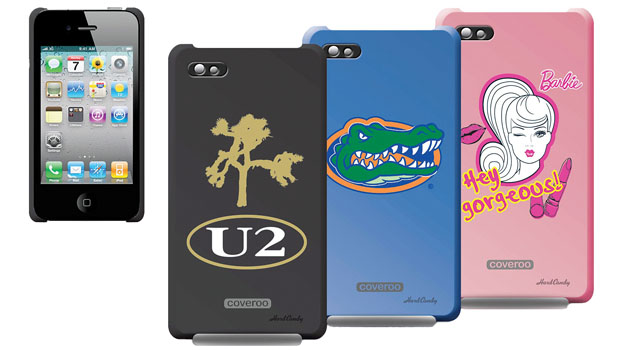Tech gadgets
also help people get news (71 percent), entertain (57 percent) and shop for
products or services (56 percent).
Gadget users admit they are dependent on their devices. When
asked what would happen if their technology gadgets were taken away for a week
or more, one quarter said they would feel completely disconnected.
Interestingly, Gen X women (females aged 35-44) led all other gender and age
groups with nearly a third saying they’d feel completely disconnected.
Conversely, 25-34 year-old men lead the response category “Yes! Please
disconnect me, I need the break!” with 16.6 percent of respondents feeling
they’re too connected.
The desired to be connected is still increasing. ABI Research
forecasts there will be over five billion mobile subscriptions by the end of
2010, with an approximate 4.8 billion connections having been reached by the
end of the year’s first quarter. Africa remains the fastest growing mobile
market with a year over year growth of more than 22 percent. Mobile penetration
in Asia-Pacific will rise significantly to 65 percent by the end of 2010 with
India and Indonesia driving growth. ABI Research credits this growth to falling
monthly tariffs and ultra-low-cost mobile handsets that have democratized the
reach and use of the mobile phone, and aggressive rollouts by mobile operators
in these countries.
At the other end of the spectrum, developed countries in North
America and Europe continue to add subscriptions despite already having crossed
the 100 percent penetration threshold. Driving this growth in subscriptions are
new mobile devices and the “third screen” - including netbooks, tablet
computers, USB dongles and e-book readers.
The world’s smartphone markets continued to build on their
strong 4Q-2009 performance in the first three months of 2010. According to the
latest ABI Research data, a little more than 55 million smartphones shipped
during the quarter. In fact that represents a drop of about one million
compared to 4Q-2009, but seasonal sales cycles always produce lower results in
the first quarter of any year compared to the previous quarter. “Normally we
would see a much greater decline in shipments in the first quarter,” said
senior analyst Michael Morgan. “The fact that the drop was so relatively small
highlights the continuing dynamic growth of the smartphone market.”
Much of the fastest growth is being seen in markets previously
little penetrated by expensive, cutting-edge smartphones. With less expensive
models becoming available, the global market is becoming much more diverse. An
example is provided by Nokia. Its shipments rose quarter over quarter from 20.8
million to 21.5 million despite the usual quarterly decline, building on an
explosive last quarter of 2009 which saw the firm’s smartphone shipments expand
25 percent, largely on the strength of its new models such as the “C” and “X”
lines which are experience-focused, lower-cost smartphones that directly
address markets in the developing world. ABI Research pointed out that Nokia
has a history of success in lower-cost feature phone markets, but until
recently their smartphone lineup was exclusively high-end.
“These are not iPhone-killers,” noted Morgan. “They’re simpler,
lower-end devices, not bleeding-edge top-of-the-line technologies, but they can
still deliver satisfying social networking and other basic smartphone
experiences.”
iPhone shipments also rose slightly, from 8.7 to 8.8 million,
partly on the back of strong performance in markets such as Japan and China.
Morgan believes that “The smartphone market as a whole was probably buoyed by
improving first quarter holiday season demand from the Asia-Pacific region.”
Unfortunately, as the use of smartphones increases, so does the
potential for malicious activity. That’s why smartphone users are urged to beef
up the security in their devices. One of the best products on the market is
from Lookout and it protects Android, BlackBerry and Windows Mobile devices.
The security app may be downloaded free from . Lookout has users all over the
world, in 170 countries across over 400 mobile networks. Even business users
are turning to this free security app with Lookout users represented in over 50
percent of the Fortune 100.
No discussion about connected gadgets would be complete without
a word about the iPhone. Apple is struggling to work out the kinks in the
iPhone 4, but the device is popular nevertheless. Companies are already
offering accessories to customize it. For example, Coveroo ()
customizes cases for mobile devices including the iPhone 4. Prices start at
$29.95.
“Coveroo has more than 3,000 unique designs to choose from — as
well as the option to make your own custom design - making it easy to find the
perfect way to express yourself,” said Coveroo’s CEO, Karl Jacob.
Coveroo supports all major mobile brands. For some devices
Coveroo customizes and replaces the original backs or battery covers so the
design becomes an interchangeable accessory and doesn’t add any bulk. For
iPhones and other devices that don’t have removable covers, Coveroo customizes
high quality cases manufactured by reputable brands. Coveroo engraves designs
onto covers and cases using the company’s laser technology or proprietary
HighColor process. The colors won’t fade, rub off or peel.
To get a Coveroo case, customers select their phone type at ,
then choose the design or provide it to Coveroo. The customized cover or case
ships within 48 hours. Customers do not have to send their phone to Coveroo and
while the company is headquartered in San Francisco, they’re delighted to ship
internationally.










